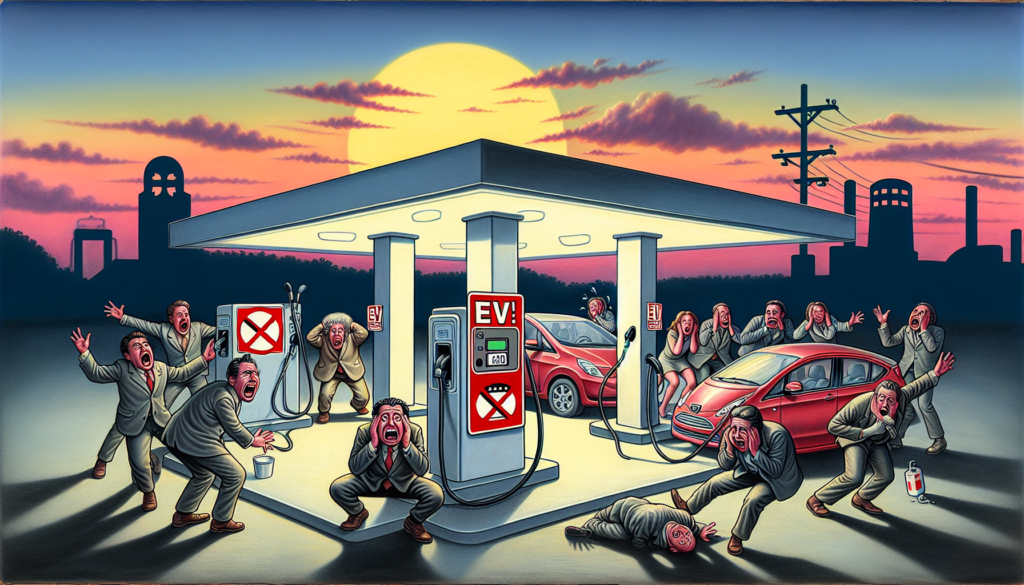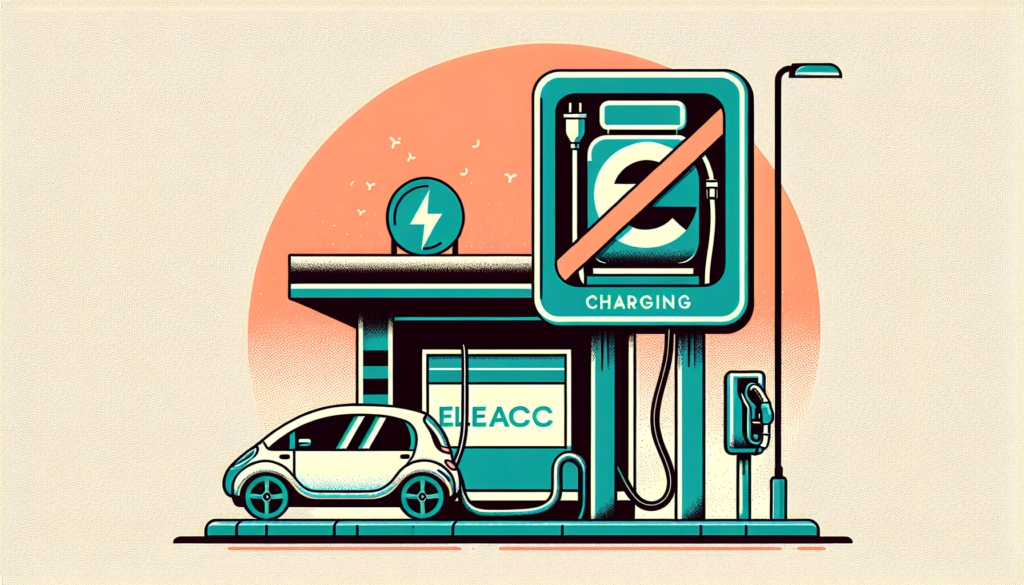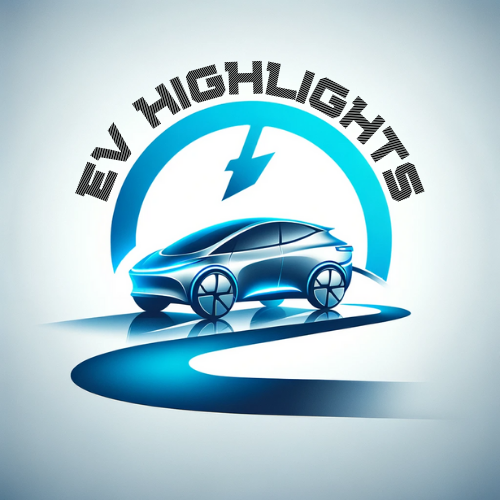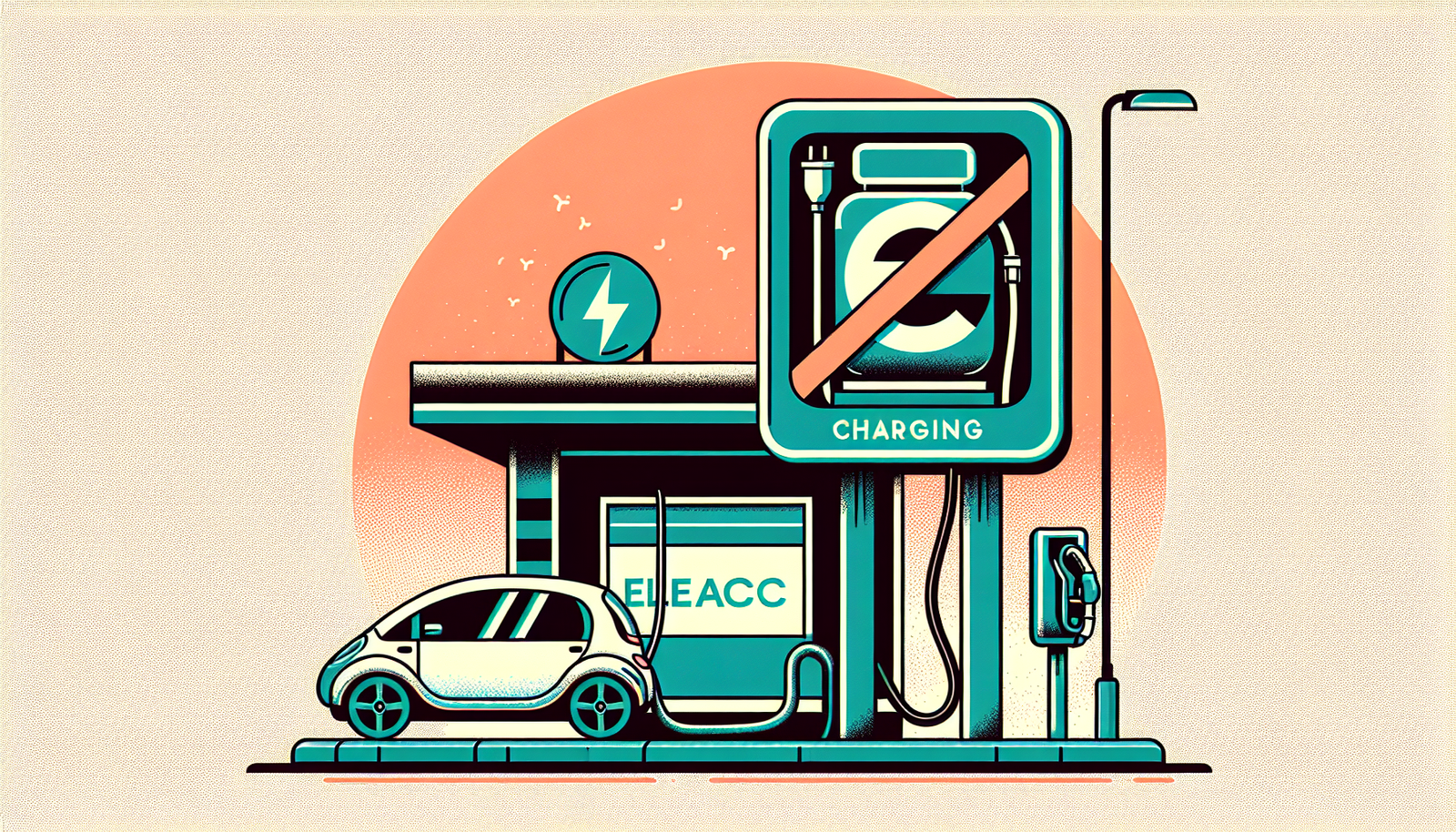Living with an electric vehicle may seem daunting at first, but it’s important to separate fact from fiction when it comes to common misconceptions. From concerns about range anxiety to the seemingly endless charging time, there are various misconceptions that have persisted about the practicality and convenience of owning an electric vehicle. However, by exploring these misconceptions and understanding the advancements in electric vehicle technology, you will discover that living with an electric vehicle is not only feasible but also an exciting and eco-friendly choice for your transportation needs.
Charging Infrastructure
Inadequate charging infrastructure
One misconception about living with an electric vehicle (EV) is the concern about inadequate charging infrastructure. Many people worry that they won’t be able to find a charging station when they need one, especially on long drives or in more remote areas. However, the reality is that the charging infrastructure is rapidly expanding. Governments, companies, and organizations worldwide are investing in the installation of charging stations to accommodate the growing number of EVs on the road. Additionally, technology advancements are making it easier to find and access charging stations through smartphone apps and navigation systems in EVs.
Limited charging options
Another misconception is the belief that there are limited charging options available. While it is true that not all charging options are equally accessible to everyone, there are various ways to charge an EV depending on individual needs and circumstances. Home charging is often the most convenient and cost-effective option for many EV owners. Installing a Level 2 charging station at home allows you to conveniently charge your EV overnight, ensuring it’s ready to go when you wake up in the morning. Public charging stations are also becoming increasingly common, available at shopping centers, workplaces, and along major routes. Additionally, rapid charging stations are positioned along highways to provide quick charging options during long journeys.
Long charging times
Many people believe that long charging times are a major drawback of EVs. However, this misconception fails to consider the practicality of charging an EV compared to refueling a gasoline vehicle. While it is true that charging an EV takes longer than filling up a gas tank, the majority of charging occurs when the vehicle is parked and not actively being used. Most EV owners charge their vehicles overnight at home, taking advantage of the hours they spend sleeping. This means that the charging time is not an inconvenience because the vehicle is parked during this period anyways. Additionally, advancements in charging technology are continuously reducing the time required for a full charge, with rapid charging stations now capable of providing a significant boost in a short amount of time.
Range Anxiety
Fear of running out of battery
One common misconception about EVs is the fear of running out of battery, also known as range anxiety. People worry that the limited range of EVs will leave them stranded on the side of the road with no charging options available. However, the reality is that technological advancements have significantly improved the range of EVs over the years. Modern EVs can travel hundreds of miles on a single charge, making them more than capable of handling daily commutes and even long-distance journeys. Additionally, the growing network of charging stations ensures that EV owners have access to charging options when needed, alleviating the fear of being stranded without power.
Limited range compared to gasoline vehicles
Another misconception is the belief that the range of EVs is significantly less than that of gasoline vehicles. While it is true that EVs generally have a lower range compared to gasoline vehicles, this difference is becoming less significant as battery technology improves. The average EV range is increasing with each new model release, with some high-end EVs offering ranges that can surpass those of certain gasoline vehicles. Moreover, the majority of daily commutes and typical driving needs fall well within the range capabilities of most EVs, making them a practical and viable option for a wide range of drivers.

Cost
Electric vehicles are expensive
One common misconception about EVs is that they are expensive to purchase. While it is true that EVs can have a higher initial sticker price compared to their gasoline counterparts, this overlooks the long-term savings they offer. When considering the overall cost of ownership, including fuel and maintenance expenses, EVs can actually be more cost-effective in the long run. With the increasing availability of EV models and government incentives, the upfront cost of EVs is gradually decreasing, making them more accessible to a wider range of consumers.
High upfront costs
Another misconception related to cost is the belief that the high upfront costs of EVs make them unaffordable for the average consumer. However, it’s important to consider the total cost of ownership over the vehicle’s lifespan. While the initial purchase price of an EV may be higher, EV owners can benefit from lower operating costs in the form of reduced fuel expenses and lower maintenance requirements. Furthermore, government incentives, such as tax credits and rebates, can help offset the upfront costs and make EVs more financially viable for many individuals. Additionally, as the demand for EVs continues to grow, economies of scale are driving down production costs, making them more affordable for consumers.
Maintenance costs
Some people believe that EVs have higher maintenance costs compared to gasoline vehicles. However, this is a misconception based on a comparison of different maintenance requirements. EVs have fewer moving parts, no engine oil changes, and generally have less wear and tear on components such as brakes. This results in lower maintenance costs over time. EVs also have regenerative braking systems, which reduce brake pad wear, ultimately prolonging the lifespan of brake components. While EVs may require occasional battery inspections or replacements, these costs are often offset by the long-term savings on fuel and traditional maintenance expenses.
Driving Experience
Electric vehicles are slow and have poor acceleration
One common misconception about EVs is that they are slow and have poor acceleration compared to gasoline vehicles. However, this misconception is outdated and no longer holds true for many modern EV models. Electric motors deliver instant torque, providing quick acceleration and a responsive driving experience. In fact, many high-performance EV models can rival or even surpass the acceleration of gasoline-powered sports cars. Due to the nature of electric powertrains, EVs offer a smooth and linear power delivery, enhancing the overall driving experience.
Lack of engine noise
Another misconception about EVs is the belief that they lack the traditional engine noise associated with gasoline vehicles. While it is true that EVs operate silently, this can actually be seen as a benefit rather than a drawback. The absence of engine noise provides a quieter and more serene driving experience, making it easier to enjoy conversations, music, or simply appreciate the sounds of nature during a drive. Moreover, it allows for reduced noise pollution in residential areas and city centers, contributing to a more pleasant and sustainable environment.
Limited options for electric vehicle models
In the past, there were limited options when it came to choosing an EV model. However, this misconception is rapidly becoming outdated as more automakers enter the EV market. Today, there is an ever-growing selection of electric vehicle models available, ranging from compact cars to SUVs and even luxury vehicles. This expanding variety offers consumers the ability to find an EV that suits their individual needs and preferences, ensuring that there is a suitable electric vehicle option for almost every type of driver.

Battery Life
Concerns about battery degradation
One concern that many people have about EVs is the potential degradation of the battery over time. However, this misconception fails to acknowledge the advancements in battery technology and the warranties provided by manufacturers. EV battery technology has greatly improved in recent years, with longer-lasting and more durable battery packs. Additionally, most EV manufacturers offer warranties on their batteries, guaranteeing their performance for a certain number of years or miles. With proper care and following manufacturer guidelines, battery degradation is typically minimal and should not significantly impact the overall driving experience or range of the vehicle.
Expensive battery replacements
Another misconception regarding EVs is the assumption that battery replacements are prohibitively expensive. While it is true that battery replacements can be costly, it’s important to consider the overall lifespan of an EV battery and the potential cost savings from reduced fuel and maintenance expenses. Moreover, as technology advances and battery production scales up, the costs associated with battery replacements are expected to decrease over time. Additionally, the warranties provided by manufacturers often cover battery performance and potential defects, providing further reassurance to EV owners.
Limited lifespan of batteries
Some people believe that EV batteries have a limited lifespan, requiring frequent replacements. However, this is a misconception based on outdated information. The lifespan of modern EV batteries has significantly improved, with many manufacturers offering warranties that guarantee a certain level of battery performance for a specified number of years or miles. Furthermore, research and development in battery technology continue to make strides, enhancing the lifespan and durability of EV batteries. As a result, EV owners can expect their batteries to last for many years without the need for premature replacements, making EVs a reliable long-term transportation option.
Availability
Limited availability of electric vehicle models
In the early stages of the EV market, the range of available models may have been limited, leading to the misconception that there are few choices for prospective EV owners. However, this perception has rapidly changed as automakers increasingly recognize the demand for electric vehicles. As a result, the availability of EV models has significantly expanded, with many major automakers now offering electric alternatives to their conventional lineup. From compact cars to SUVs and even electric trucks, the options for EV buyers continue to grow, ensuring that there is a suitable electric vehicle model for almost every consumer.
Limited charging stations in remote areas
Another concern related to the availability of EVs is the belief that there are limited charging stations in remote areas. While it is true that charging infrastructure may be less dense in rural or remote regions compared to urban centers, efforts are continuously being made to address this issue. Governments, private companies, and organizations are working together to expand the charging network, with a particular focus on strategic locations such as highways, tourist destinations, and remote areas. Additionally, the increasing range of EVs allows for longer trips between charging stations, making it more feasible to travel to remote areas without the fear of being stranded.
Performance in Extreme Weather
Reduced range in cold weather
One common misconception about EVs is the concern that their range significantly decreases in cold weather conditions. While it is true that extreme temperatures can impact the efficiency of an EV’s battery, advancements in thermal management systems have mitigated this issue. Modern EVs are equipped with sophisticated battery cooling and heating systems that help maintain the optimal temperature range for the battery’s performance. Additionally, most EVs provide pre-conditioning features that allow the battery and interior to be heated or cooled while the vehicle is still plugged in, ensuring optimal range even in extreme weather conditions.
Battery performance in extreme temperatures
Another concern regarding EVs and extreme weather is the belief that batteries perform poorly in hot climates. While extreme heat can affect battery performance, manufacturers design their EVs to withstand a wide range of temperatures. Battery management systems monitor and regulate the battery’s temperature, preventing overheating and ensuring optimal performance. Moreover, EV owners can take simple precautions such as parking in shaded areas or using designated cooling systems to protect the battery from prolonged exposure to high temperatures. With appropriate care, EVs can function reliably in extreme weather conditions, providing peace of mind to owners in various climates.
Safety
Perceived safety risks from Lithium-ion batteries
One misconception about EVs is the perceived safety risks associated with Lithium-ion batteries. While there have been incidents involving battery-related fires in the past, it’s essential to understand that these incidents are rare and isolated cases. Manufacturers follow strict safety protocols and regulations to ensure the safety of their battery systems. Lithium-ion battery technology has undergone significant advancements, resulting in improved safety features and designs. EVs are engineered to minimize the risk of battery-related incidents, with robust safety systems in place, including advanced cooling systems, thermal management, and fault detection mechanisms. Additionally, EVs undergo rigorous safety testing and meet stringent safety standards before being approved for sale.
Fire hazards associated with electric vehicles
Another misconception related to EV safety is the belief that EVs are more prone to fires compared to gasoline vehicles. However, research and real-world data indicate that EVs are not more likely to catch fire than their gasoline counterparts. In fact, statistics show that traditional gasoline-powered vehicles are more susceptible to fires due to the highly flammable nature of gasoline. Additionally, the advanced battery management systems in EVs minimize the risk of battery fires, and modern lithium-ion batteries are designed with safety features that reduce the likelihood of thermal runaway and combustion. As with any vehicle, following proper charging and maintenance procedures ensures the safe operation of an EV, making them a reliable and secure transportation option.
Public Perception
Lack of knowledge about electric vehicles
One common misconception about EVs stems from a lack of knowledge and awareness among the general public. Many people may have limited exposure to EVs and therefore lack an understanding of their capabilities, benefits, and overall performance. However, as awareness and education about EVs continue to grow, this perception is gradually changing. Governments, organizations, and automakers are actively promoting the benefits of EVs, providing educational materials, and organizing events to showcase their advantages. Additionally, the increasing number of EVs on the road is helping to dispel misconceptions and demonstrate the practicality and viability of electric transportation.
Misconceptions about charging and driving experiences
Another factor contributing to public misconceptions about EVs is a lack of experience or exposure to the charging and driving aspects of electric vehicles. Without firsthand experience, it can be challenging to fully grasp the convenience and simplicity of charging an EV or the unique driving dynamics they offer. However, as charging infrastructure becomes more widespread and accessible, and as more individuals have the opportunity to test drive or rent EVs, these misconceptions are quickly fading. Personal experiences play a significant role in dispelling preconceived notions and showcasing the positive aspects of living with an electric vehicle.
Environmental Impact
Misconceptions about electricity sources
One common misconception about EVs is that they are not truly environmentally friendly due to the generation of electricity from fossil fuels. While it is true that the electricity used to charge an EV can come from various sources, including fossil fuels, this overlooks the overall environmental benefit of shifting from internal combustion engine vehicles to electric ones. EVs are more energy-efficient than gasoline vehicles, and even when charged with electricity from fossil fuels, they still produce fewer greenhouse gas emissions over their lifetime. Furthermore, the transition to cleaner energy sources, such as renewable energy, is being actively pursued worldwide, ensuring that the environmental impact of charging EVs will continue to decrease.
Production and disposal of batteries
Another misconception related to the environmental impact of EVs is the belief that the production and disposal of batteries contribute to significant environmental harm. While it is true that battery production processes involve the extraction of raw materials and energy consumption, advancements in battery technology are resulting in more efficient and environmentally conscious manufacturing processes. Additionally, the recycling and reusing of batteries are becoming increasingly prevalent, further reducing the environmental impact. Proper recycling and disposal methods ensure that the materials within the batteries can be recovered and reused, reducing the need for new raw materials and minimizing waste. As the EV industry matures, the focus on sustainable battery production and disposal practices will continue to grow, ensuring a more sustainable future for electric transportation.

